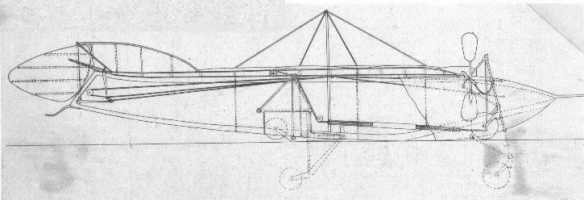|
Alphonse Penaud
When the Wright brothers conducted their
exhaustive study of everything
that had been done in aeronautics
and aviation until their day, they paid particular
attention to the work of two men:
George Cayley and Alphonse
Penaud. Penaud, trained as a marine engineer, applied his
training to the field of
aeronautics. In 1870, at the age of
twenty, he became famous as the inventor of a
helicopter toy powered by a
twisted rubber band. In 1871, he used
the same mechanism to power
a twenty-inch (51cm) monoplane
(single-wing aircraft) that he called a
“planophore.” Penaud’s
model incorporated many elements of
Cayley’s designs, but with some subtle
differences.

Penaud’s incredible 1876 design for a
seaplane with retractable landing gear
Some distance behind the
wings, Penaud placed a tail section: a vertical rudder and
two small wings called “elevators” tilted at a downward
angle. This counteracted all the destabilizing forces on the
aircraft. Penaud’s tail assembly did not just change the
direction of the aircraft as it flew, which was all Cayley
had attempted to do, but succeeded in making the aircraft
stable in flight. The tests of his model represented the
first flight of an inherently stable aircraft.
In 1876, Penaud patented a design for a large amphibious aircraft
with such innovative features as retractable wheels, a
glass-enclosed cockpit, a single-lever control for both the
rudders and the elevators (the first “joy stick”), and twin
propellers driven by an engine concealed in the fuselage.
The design was amazingly ahead of its time, so much so that
no engine existed that could drive such an aircraft and make
it fly. Unable to raise money to build his design, in
failing health and discouraged by jealous criticism of his
work, Penaud committed suicide in 1880, when he was but
thirty years of age. Next to Cayley, he ranks as the most
significant aerodynamic theorist of the nineteenth
century.
|
